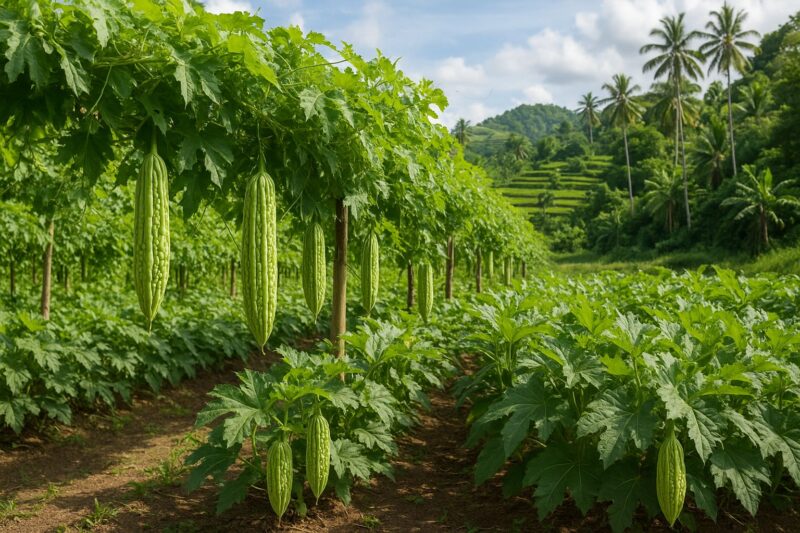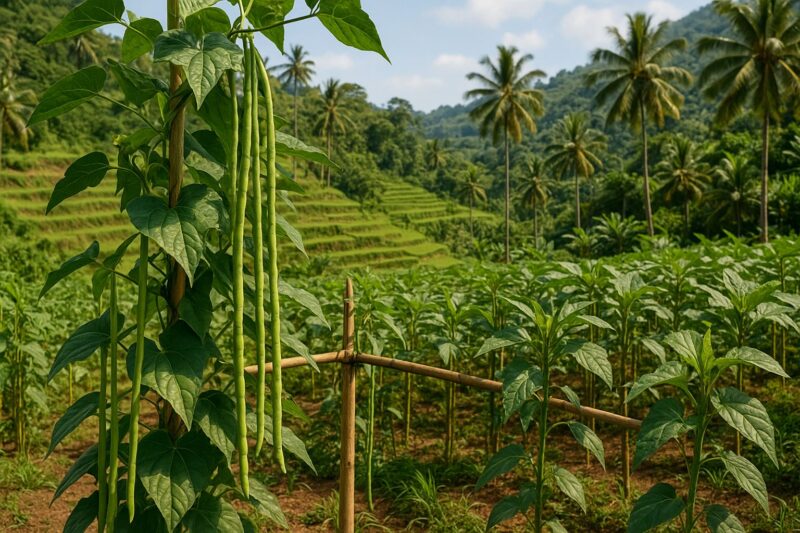Winged bean—sigarilyas—is a climbing legume prized for its edible pods, leaves, flowers, and even tuberous roots. In Filipino kitchens, its crisp, four-winged pods star in ginisang sigarilyas, while young leaves wilt into stir-fries and flowers garnish salads. Though a tropical crop, winged bean needs supports, fertile soil, and consistent moisture to produce its best yields. After several seasons training vines in Bulacan and swapping ideas with growers in Cavite’s lowlands and Bukidnon’s highlands, I’ve distilled a method that delivers abundant beans almost anywhere in the archipelago.
Variety Selection
Local landraces yield pods up to 20 centimeters, while improved lines produce longer pods—up to 30 centimeters—with fewer side shoots. In Bulacan, I grow the local type for its flavor and resilience, plus a hybrid called “Emerald Wing” for its uniform pods and early maturity (around 60 days). Highland plots in Baguio favor the shorter-vine varieties that handle cooler nights. Planting both gives you staggered harvests and options for fresh or dried pods.
Soil Preparation
Winged beans thrive in deep, friable loam rich in organic matter. In clay-rich beds, I work in two wheelbarrows of compost and a handful of rice hull charcoal per ten square meters to improve drainage. Coastal sandy soils benefit from aged chicken manure and coconut coir to hold moisture. Aim for pH 6.0–6.5; if acidity is high, a light dolomite lime dressing corrects it.
Support Structures
As a vigorous climber, sigarilyas needs trellising. I build A-frame supports from bamboo poles spaced every meter, laced with twine. In Bulacan’s strong sun, I position these east-west so vines get morning light first. Alto grow in containers on balconies, I use sturdy metal cages. As shoots reach 30 centimeters, I guide them gently onto the supports, training tendrils to weave in for vertical growth.
Planting and Timing
In lowlands, sow seeds at the onset of the rainy season—June to July—so moist soils speed germination. In uplands, you can plant as early as April. Before sowing, soak seeds overnight to soften their hard coats, then plant them 2–3 centimeters deep along the base of each trellis. Space seeds 30 centimeters apart to give each vine room to ramble.
Watering and Mulching
Consistent moisture is essential, especially during flowering and pod set. I water deeply each morning—wetting soil 15 centimeters down—then let the surface dry slightly by afternoon. Mulching with rice straw conserves moisture, suppresses weeds, and moderates soil temperature. In container plantings, I water daily during dry spells.
Feeding
At planting, I mix a handful of bone meal into each hole for phosphorus. Six weeks after emergence, when vines start to flower, I side-dress with decomposed chicken manure at the drip line. Because winged bean is a legume, it fixes its own nitrogen, so heavy nitrogen fertilizers are unnecessary and can lead to lush foliage but fewer pods.
Pest and Disease Management
Winged beans have few serious pests. Aphids may cluster on new shoots; a gentle spray of neem oil or water usually controls them. Pod borers—moth larvae—are rare in home gardens; early-morning inspections and removal of infested pods prevent spread. Root rot can occur in waterlogged beds; raised trellised beds and proper drainage keep roots healthy.
Harvesting
Fresh pods appear 60 to 75 days after sowing. Pick when they reach 15–20 centimeters—tender yet crisp—and before seeds bulge inside. Harvest every two to three days to encourage continuous pod set. Young leaves and flowers can be harvested earlier; snip tender leaflets or flower clusters, leaving the vine to keep growing.
Case Study
A cooperative in Cavite introduced winged bean into intercropped corn and peanut beds, using trellises along field edges. The beans climbed without shading main crops, and members harvested pods for local markets while improving soil fertility via nitrogen fixation.
Final Thoughts
Winged bean may demand a bit more structure than sprawling greens, but its multi-use leaves, flowers, pods, and roots make it one of the most valuable vegetables you can grow in tropical gardens. From coastal farms to rooftop planters, master variety choice, soil health, trellising, timing, moisture, and simple pest checks to enjoy abundant sigarilyas harvests season after season.
I’m open for consulting and speaking opportunities on sustainable vegetable production nationwide. Let’s grow together.
#Sigarilyas #WingedBean #PhilippineFarming #SustainableAgriculture #UrbanGardening #ConsultingAvailable #SpeakingOpportunities




